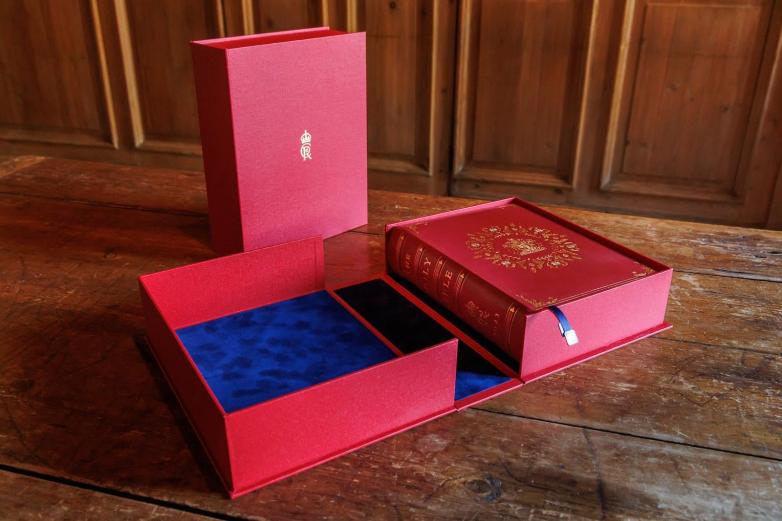The final specification involved leather doublures inside the covers with inlays of dark blue leather, navy blue silk flyleaves, handsewn silk head and tail bands, raised bands on the spine, and a full gilt finish inside and out of 24ct gold leaf.
The printed signatures were first sewn by hand on linen tapes with linen thread on a wooden sewing frame – this method ensures longevity, flexibility and strength.
The cover boards were created by laminating dense millboard and paper and sanding them to create a soft cushioned look. The edges of the pages were gilt, the spines rounded with a cobbler’s hammer, and shaped (‘backed’) to accommodate the cover boards perfectly, and gold, red and blue silk threads were wound around cores at the head and tail of the spine to create the headbands.
The leather was pared by hand to ensure a smooth seamless finish and applied to the cover boards with wheat starch paste. After drying, the King’s cypher, and royal and OUP crests were blocked to front, back and spine in gold leaf and the lengthy process of hand tooling the design using individual hand tools and 24ct gold leaf began.
Boxes were made to hold each bible with the King’s cypher emblazoned in gold to the top.
Six staff spent over 300 hours binding and finishing the four bibles and I am immensely proud of what was accomplished. I am grateful to OUP for asking us to work with them again.
This is the first of three guest posts by people involved in the creation of the Coronation Bible. Part II will appear tomorrow, part III on Thursday.

















